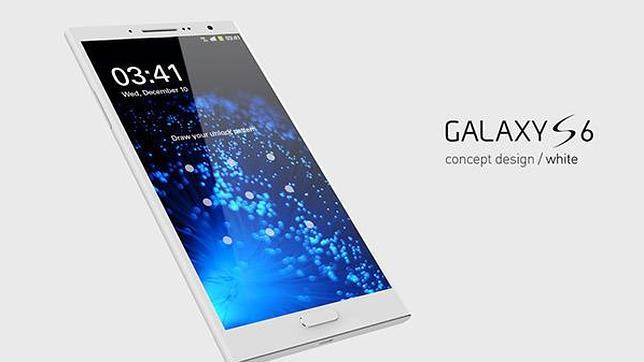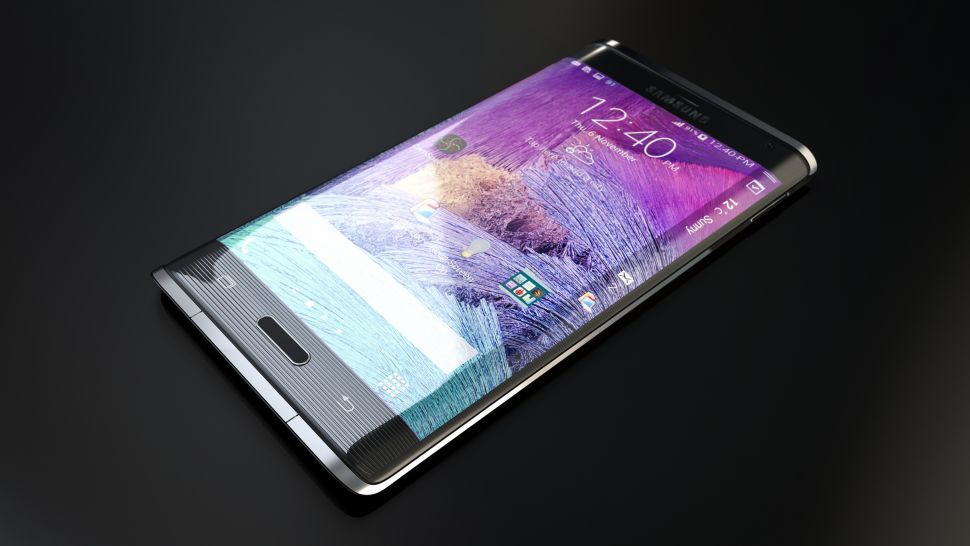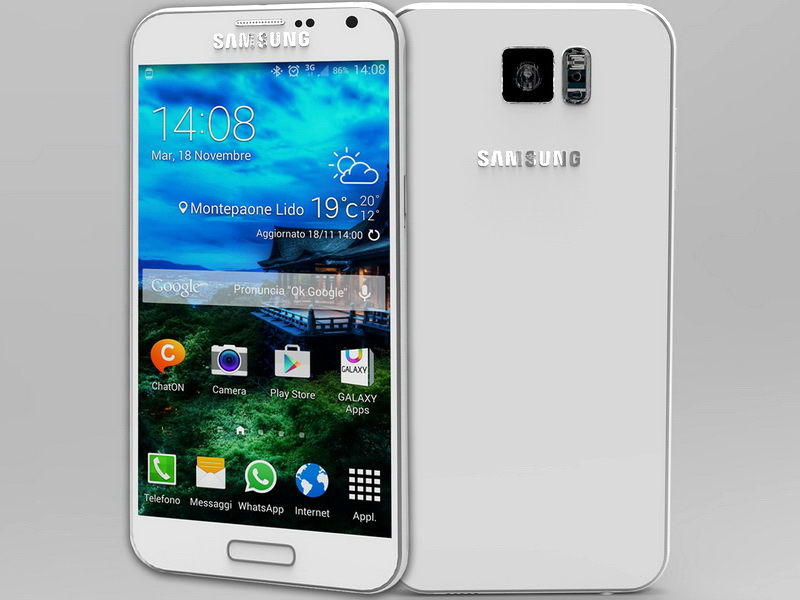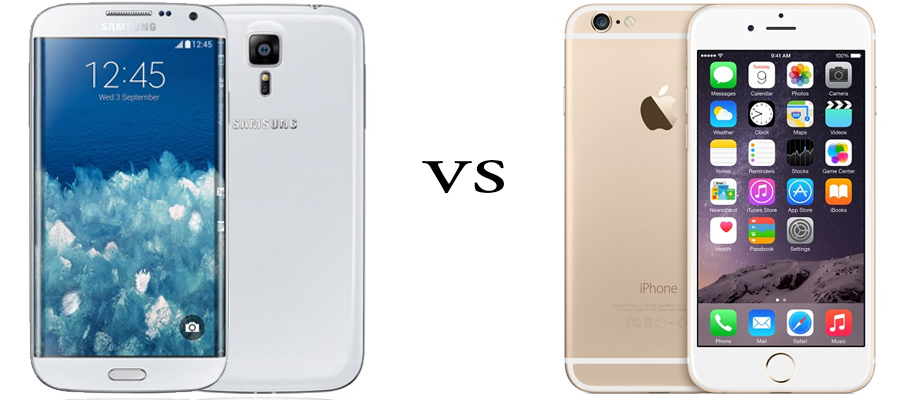The Samsung Galaxy S6, presented at the Mobile World Congress 2015, represents a quantum leap in terms of design for Samsung. The South Korean firm confirms its commitment to the metal in the manufacture of its new flagship and gives importance to the photographic sensor, while Apple, which device has been some time on the market already, maintaining its balance between hardware and software.

Fighting back for the great duel in high-end devices in recent years, the comparison between the Samsung Galaxy S6 and iPhone 6 not only has the flashpoints in design. The display, extras or camera promises a a great competition between two of the most famous sagas of high-end smartphone market.
Design

Samsung finally leaves the plastic, and the Samsung Galaxy S6 is now made on metal and glass, dramatically improving its outer appearance, and using premium materials in its construction. Appearance has improved amazingly with respect to Galaxy S5.
The iPhone 6 is well known. Aluminum, rounded to the extreme edges, and fingerprint scanner on the start button on the device, like the Galaxy S6, although based on different technologies. On the iPhone, buttons are on the right side and the volume in the left, next to a two-position button to activate silent mode. While buttons on S6 are in the same place as always.
Display

Not as light as the latest iPhone (129 grams), the South-Korean company has gotten a flagship of 138 grams for a 5.1-inch terminal (which maintains the previous generation). At this point, we can say that Samsung does it better than Apple with its Super AMOLED QHD panel, capable of playing to 557 dpi and a brilliant resolution of 2560 x 1440 pixels. The iPhone 6 runs with Retina display of 4.7 inches with resolution 1334 x 750 pixels (326 dpi) and 5.5 in the iPhone 6 Plus version with resolution 1920 x 1080 pixels.
Cameras

Another difference, and Samsung itself has emphasized, is in the photo sensor, light able to get faster and so ornot the night shots in low light conditions, it allows to get good details, surpassing iPhone 6. It has improved optics and has 13 megapixels instead of the 8 megapixel of the American terminal, although we know that the pixel size does not guarantee better images.
Software/Hardware

Samsung has decided to bury Qualcomm processor and begins with self-produced Octa-Core Exynos 7420 chipset that promises high speeds. On the software rolling all machinery, there are big differences. While Apple continues with its own operating system (iOS 8.1), restrictive and closed, Samsung has relied again on Android 5.0 Lollipop and TouchWiz layer, slightly modified. The flash also serves to obtain personal information of the fingerprint, a differential to the iPhone 6 biometric sensor that keeps the Start button feature. Both have their admirers and detractors, even at the level of interface design.
As we said, TouchWiz has been greatly improved, because Samsung has cheered much its customization layer and removed large amount of bloatware that caused delays and jerks when using latest handsets. Therefore, this section is more a matter of taste. However, we thank simplicity.
In terms of performance, the Galaxy S6 is a real premium smartphone. The processor is manufactured by Samsung, with 64bit technology and 3 GB of RAM. The iPhone 6 brings a poorer hardware, but its perfect optimization between hardware and software makes it a very tough competitor in terms of performance and overall fluency. A bloody fight in this sense is coming. This is a feature in which the iPhone's suffering traditionally. With 1,810 mAh, .Habrá many days you will not get through the day with live smartphone, while the Galaxy S6 is equipped with 2550 mAh, nearing the end of the day smoothly and with available wireless charging, something the Apple phone nor can dream of.